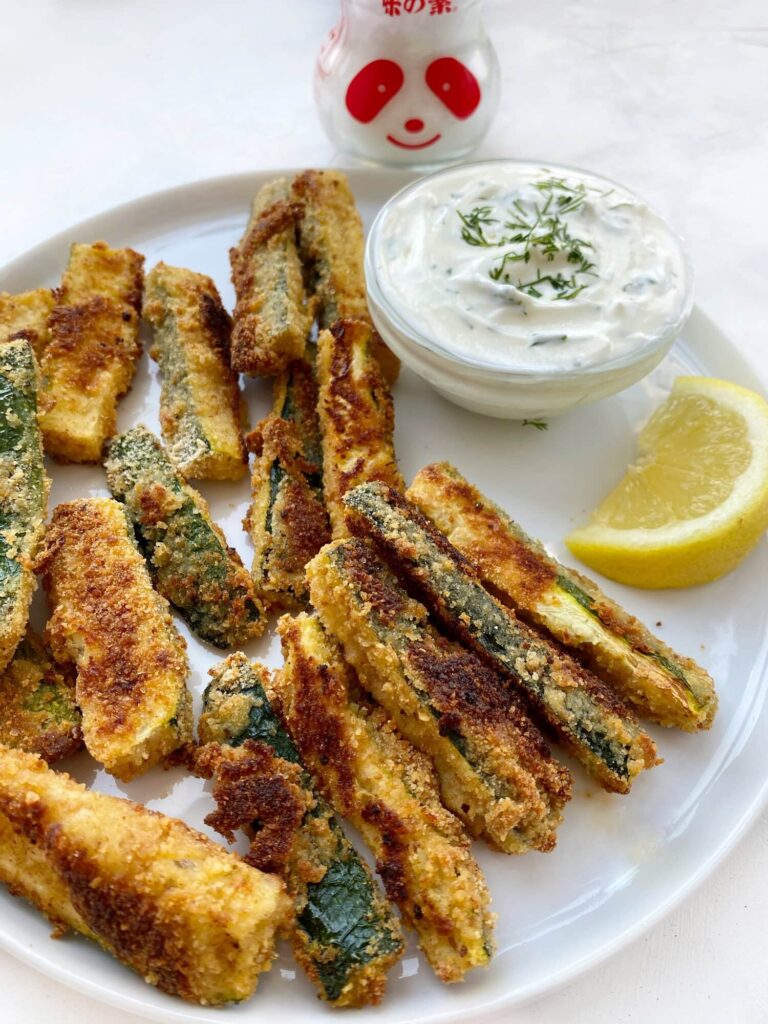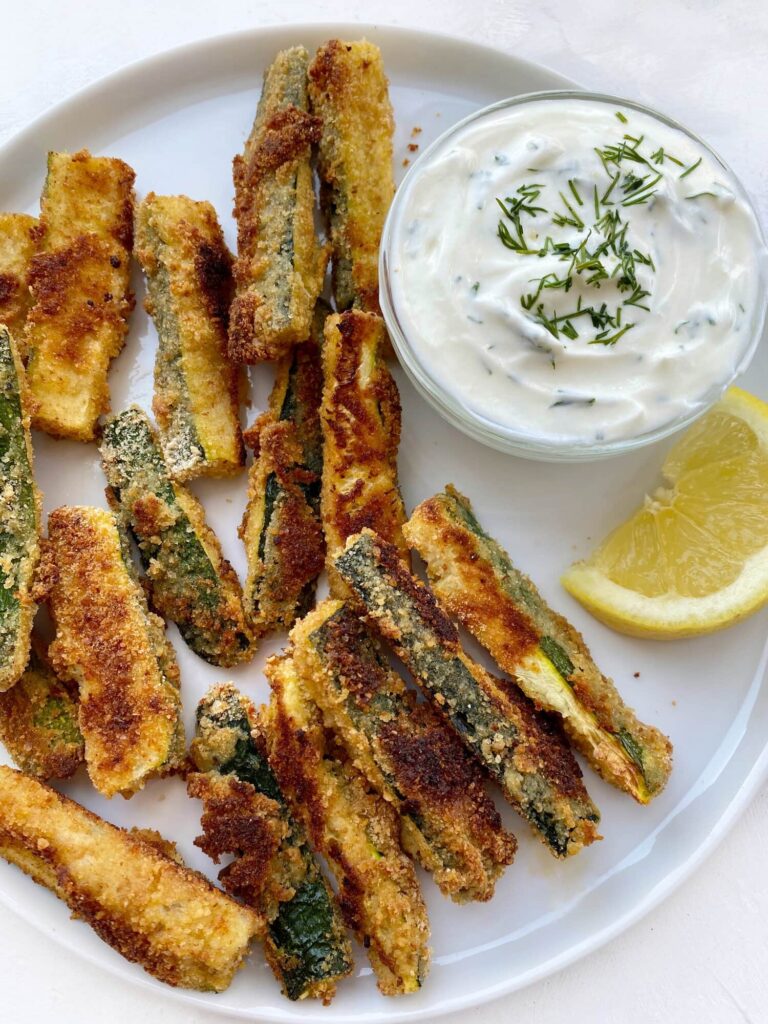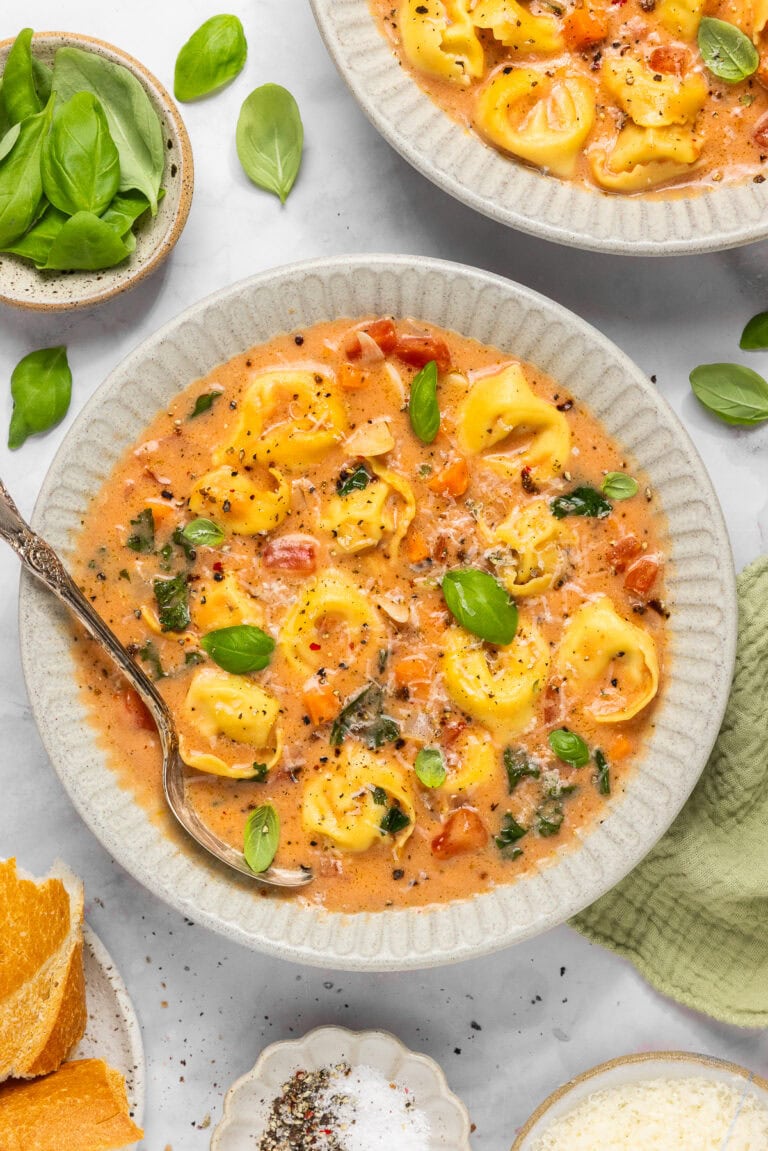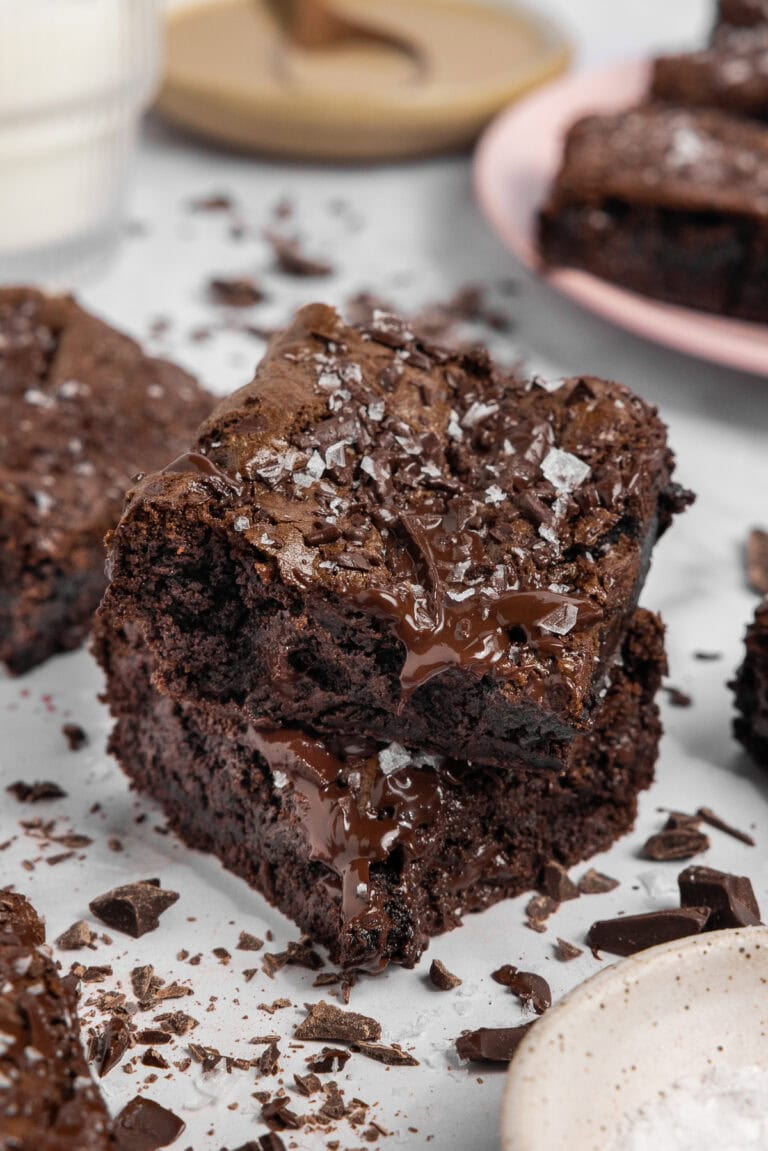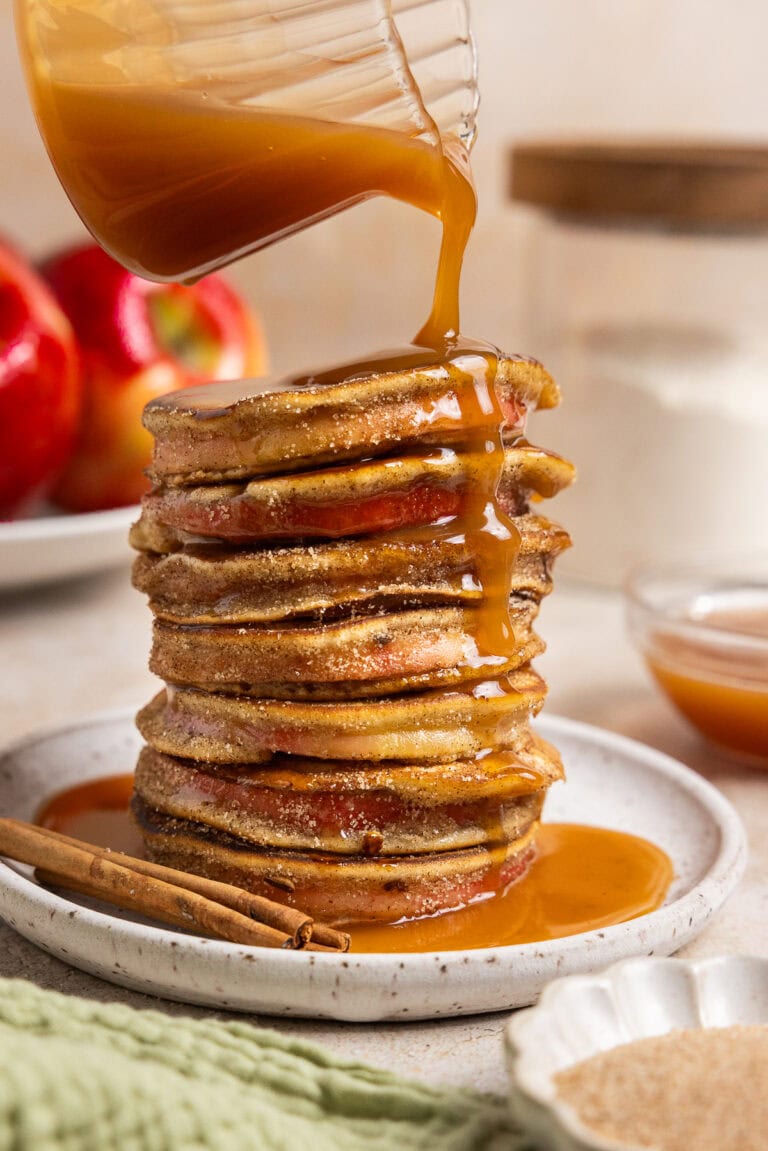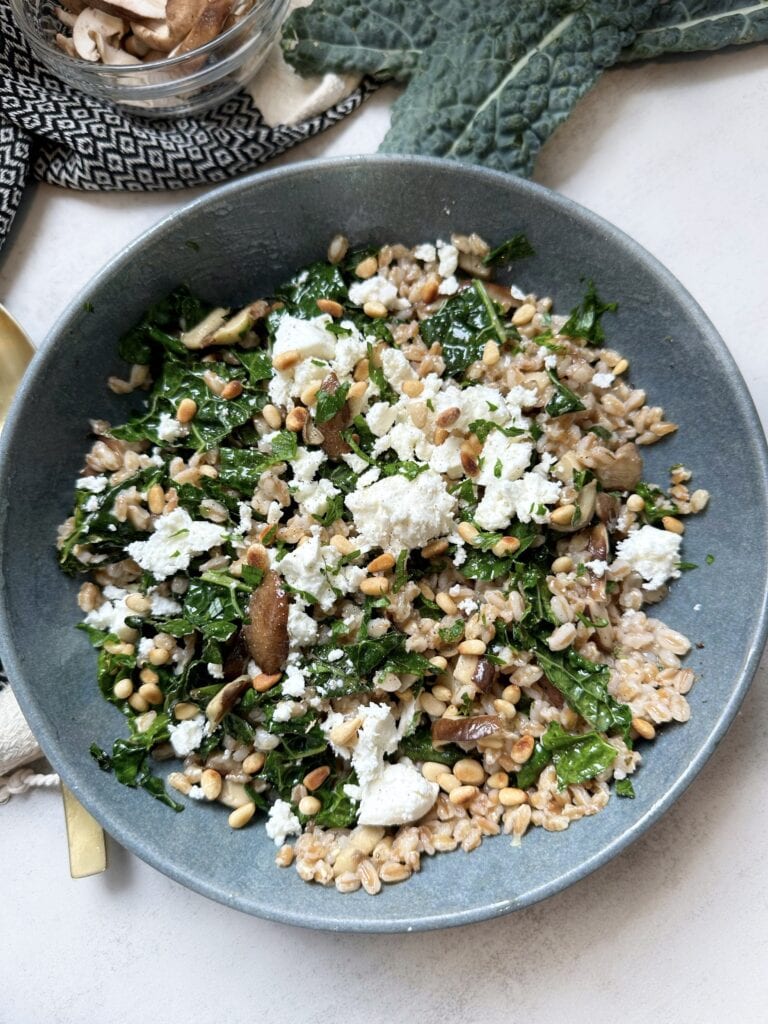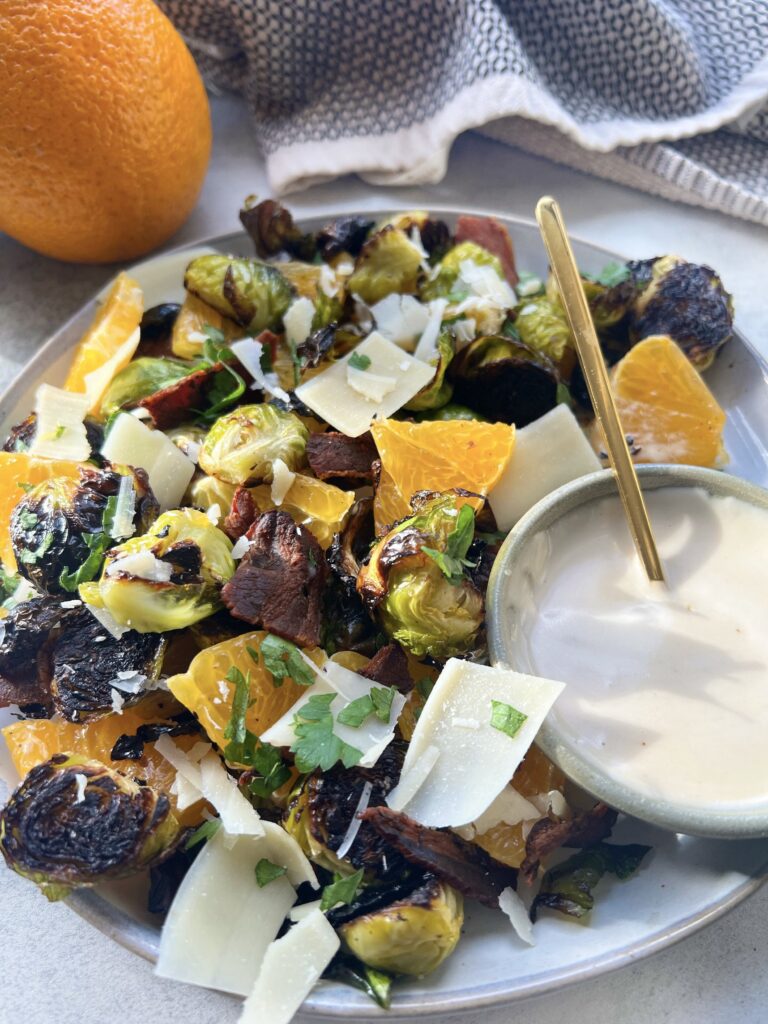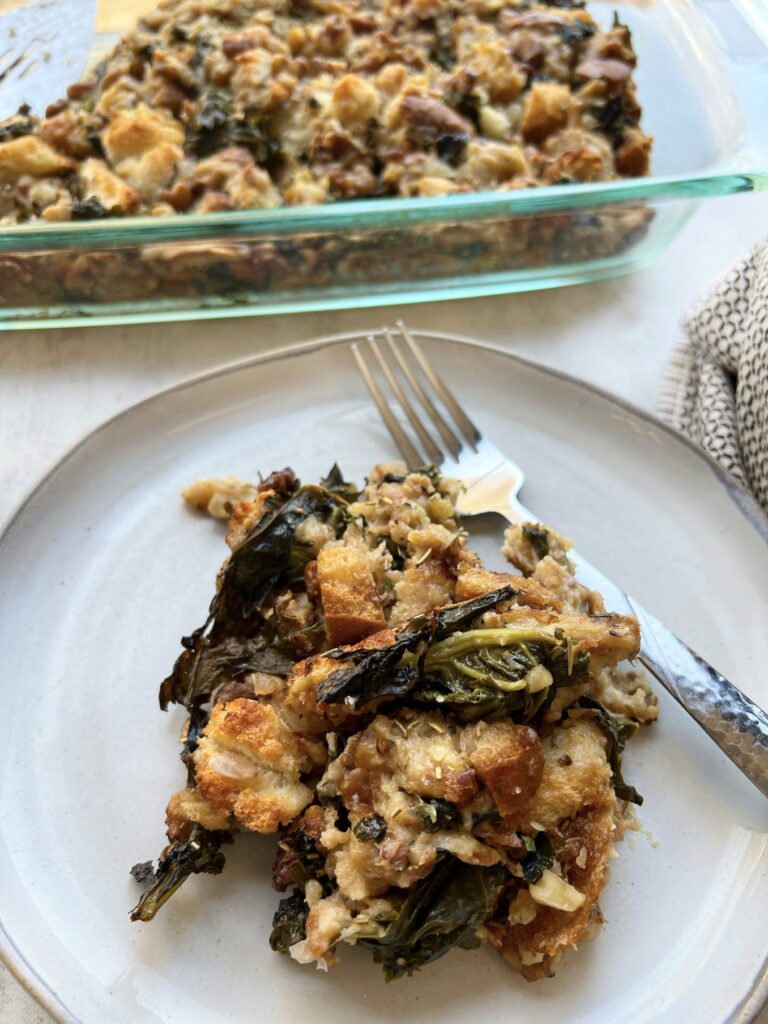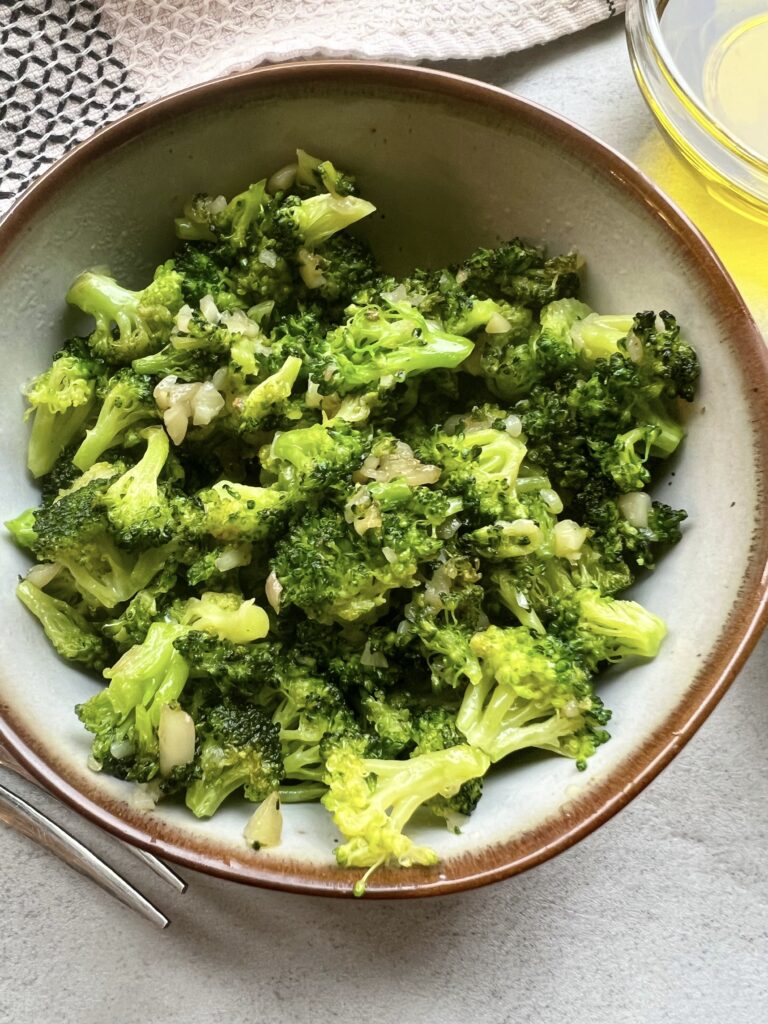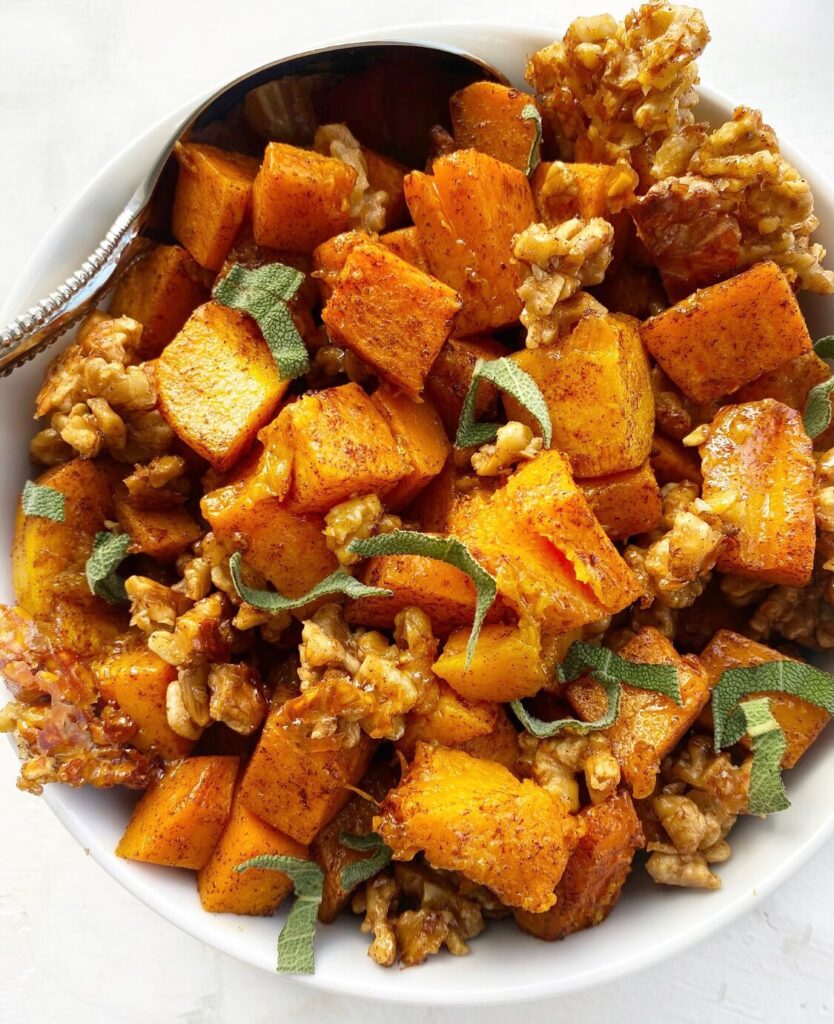Baked Zucchini Fries and Greek Yogurt Dip with a Secret Ingredient You Need to Know About
By Sammi Brondo — July 26, 2024
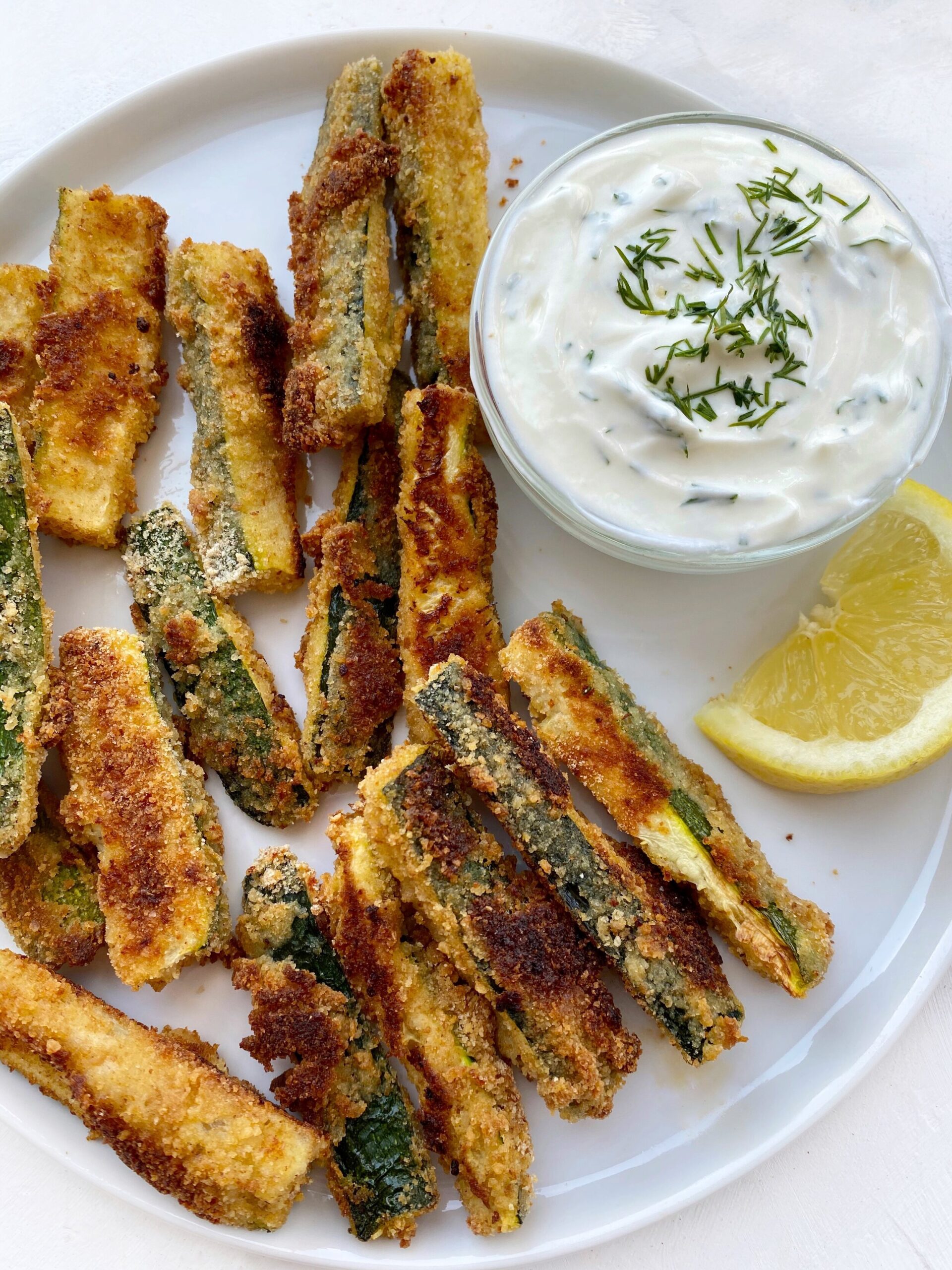
This blog post is sponsored by Ajinomoto Co., Inc. All thoughts and opinions are my own.
Many of you may remember that, last year, I went to Japan on an immersion trip to learn more about Japanese cuisine, and specifically, MSG. In a nutshell, the initiative was to debunk the common myth “is MSG bad for you?” Spoiler alert: I’ve been using MSG in my cooking ever since.
MSG – monosodium glutamate – is something that enhances flavor in meals (link: whyusemsg.com). You can read a lot of detail about it on this blog post, but for now, here are some of the main takeaways to keep in mind:
- MSG, like its name suggests, is made of sodium and glutamate. Sodium is one of the main components of salt. Glutamate is an amino acid that’s naturally found in foods like tomatoes and mushrooms. It helps to give food an umami taste, also known as the savory, fifth taste.
- The reason for adding MSG to food is simple: it heightens umami taste without adding too much sodium (up to a 40% reduction!). In fact, the new Dietary Reference Intakes suggests adding MSG as a technique to reduce sodium intake.
- And maybe most importantly, MSG is completely safe to consume. In a 2000 double blind randomized controlled trial (read: the gold standard of research), the study found no measurable changes reported in participants’ heart rate or any of their blood markers after consuming MSG. Plus, in 2018, the International Headache Society actually removed MSG from its list of headache triggers.
- Of course, I know that many people still believe they may experience symptoms from MSG. While individual symptoms can’t be discounted, first consider this: if you don’t have symptoms from foods like tomatoes – another glutamate-containing food – or table salt, it’s likely that these symptoms are related to something else in the food you’re eating, not the MSG.
How to Use It
Like I mentioned, MSG is a flavor enhancer. It’s an easy way to elevate the flavor in many dishes, including plant-based dishes.
In fact, last year, when I got home from Japan, I made simple roasted broccoli with a little MSG. I kid you not: Jordan told me it was the best roasted broccoli he’s ever eaten!
I typically like to add MSG to meals that don’t already have that glutamate component. Ever wonder why pizza and pasta are so delicious? It’s probably because they both usually contain tomatoes and parmesan cheese – two sources of glutamate (okay, there are totally other reasons… but this is definitely one of them!).
For example, if I’m making a simple stir fry, parmesan cheese doesn’t exactly go with the flavor profile. Instead, one-part MSG to one-part table salt gives the perfect flavor boost to this meal. And, like I mentioned before, I’ll often add a little MSG to simple roasted vegetables. It’s a really easy way to elevate their flavor profile without having to add any additional food or flavors.
One of my favorite ways to use it is with these Baked Zucchini Fries and Yogurt Dipping Sauce. It’s such a simple recipe but has the most incredible flavor. I love it as a side dish with any meal, an appetizer or even a snack. Now that zucchini is in season, it’s a must make.
(P.S. MSG is available as Ajinomoto at Asian-speciality stores. You can also find at major grocery stores nationwide as Ac’cent.)
Ingredients
- 3 medium zucchini
- 2 eggs
- 1 ½ cup breadcrumbs
- ¼ teaspoon salt
- ¼ teaspoon MSG or Ac’cent
- Optional: 1 ½ tablespoon olive oil
Instructions
- Preheat oven to 425 F.
- Cut zucchini into ¼ inch sticks. Set aside.
- In a shallow bowl, whisk eggs. In a separate bowl, mix together breadcrumbs, salt and MSG.
- Using tongs, dip zucchini sticks into eggs until fully coated, then dip into breadcrumb mixture and roll around until well coated. Place on a baking sheet.
- Optional: add olive oil to a large pan over medium heat. Using tons, add zucchini and let cook for about 5 minutes until crispy (note: the zucchini fries will still get golden without this step. This helps to make them slightly crispier and is optional). Place zucchini sticks back on the baking sheet.
- Cook zucchini in the preheated oven for 18-20 minutes, until crisp. Let cool for 5 minutes before serving.
- Place leftovers in airtight container in the fridge for 3-4 days.
Ingredients
- 1 tablespoon fresh dill + more for garnish
- ½ cup plain 2% Greek yogurt
- 1 tablespoon olive oil
- 2 teaspoons lemon juice
- ¼ teaspoon salt
- ¼ teaspoon MSG
Instructions
- Finely chop dill.
- In a bowl, mix together Greek yogurt, olive oil, lemon juice, dill, salt and MSG. Add extra dill for garnish on top.
- Store leftovers in an airtight container in fridge for 3-4 days.

